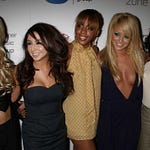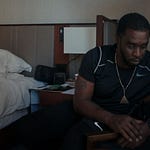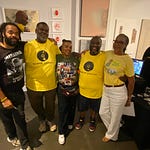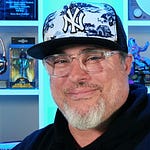But horrorcore’s Black origins are too often overlooked, especially when the aesthetic gets carried forward by acts like Insane Clown Posse. The blueprint was drawn by Black artists who used the macabre not as a costume, but as commentary. That distinction matters.
Spooky season always brings a certain energy to the Queue Points crew; a chance to look at the unfamiliar corners of the music world. We couldn’t resist shining a light (or maybe a flashlight under the chin) on horrorcore hip hop: a subgenre that’s as controversial as it is creative, and way more Black in its roots than folks might realize.
“What I do think Horrorcore did for hip hop is… gave artists an opportunity to rap beyond the confines of reality. And anytime that Black folks get the opportunity to do that, I champion it.”
- Jay Ray
Right off the bat, the hosts had to set the record straight. Horrorcore isn’t the most controversial subgenre in music—punk might fight for that crown—but it absolutely raises eyebrows. Honestly, horrorcore is less about everyday rotation and more about the thrill of the experience. As we like to say, it’s a fun curiosity. You probably won’t catch us breaking out our best moves at a horrorcore party, but there’s power in music that lets Black artists tell stories beyond reality, to borrow and bend the rules just like Alice Cooper or Ozzy Osbourne did for rock.
The conversation always circles back to the Geto Boys. Their “Assassins” and the psychological landmark “Mind Playing Tricks on Me” showed how the most chilling tales can also reveal something real about the pain and mental health struggles in Black communities—especially for young men in the 90s when nobody was checking if Black boys were okay. Horrorcore, at its best, touches the unspoken and gives language to feelings that sit just beneath the surface.
“One other point I’d like to make about ‘Mind Playing Tricks on Me’… I think that song in particular made its way into the often rigid souls of hip hop’s main audience at that time, which is adolescent… specifically Black boys. And this is a time when nobody is checking on Black men and Black boys emotionally.”
- DJ Sir Daniel
Beyond Houston, horrorcore found a home in Memphis with Three 6 Mafia, on the West Coast through Brotha Lynch Hung’s “Rip Gut” style, and finally up in New York with Gravediggaz. Every region had its own approach, blending horror movie aesthetics, urban legends, and gritty reality into music that could be as absurd as it was alarming. But let’s not kid ourselves: plenty of what sells as horrorcore is more about the gimmick than the genius, and that’s okay, too. Sometimes art is just about having a good time, scaring yourself a little.
But horrorcore’s Black origins are too often overlooked, especially when the aesthetic gets carried forward by acts like Insane Clown Posse. The blueprint was drawn by Black artists who used the macabre not as a costume, but as commentary. That distinction matters.
And here’s something else: the spirit of horrorcore never really left. We saw horrorcore in the early releases from Tyler, The Creator. The video for “Yonkers” being one of the scariest of all time. Drill, trap—the dark energy, the “boogeyman” posture, it still echoes through what’s hot today, for better or worse. It pays to pay attention to where those vibes come from.
Stay spooky, y’all!














